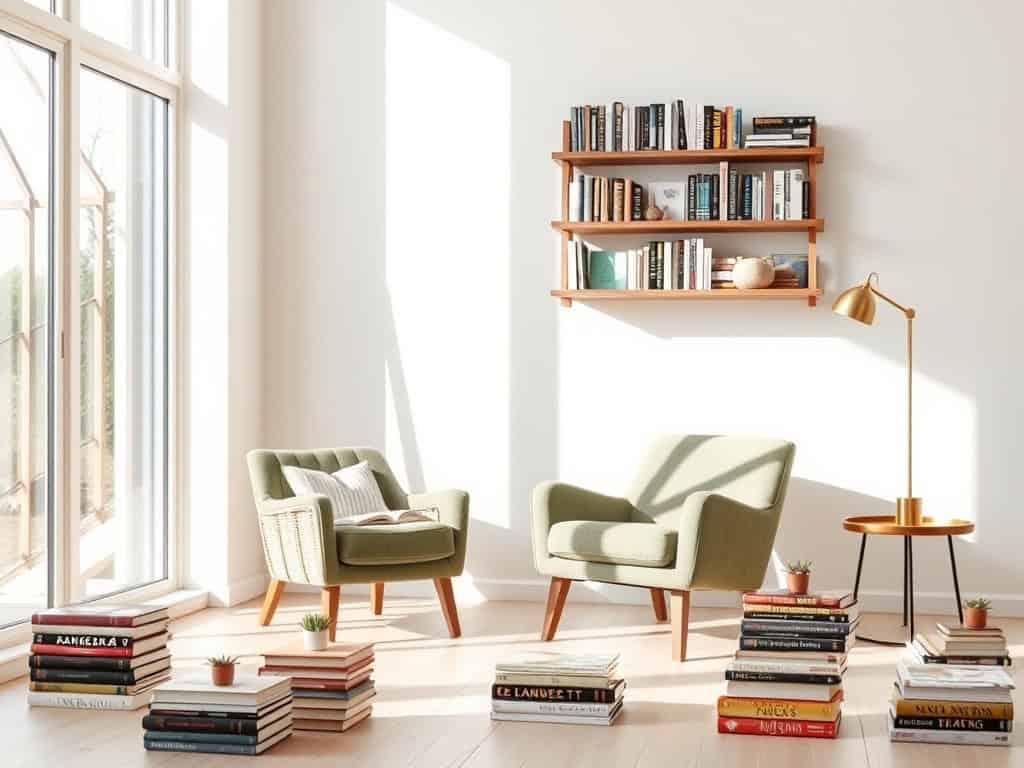Did you know that the average library cardholder checks out 35 books per year? If you’re like most book lovers, keeping track of those borrowed treasures can feel like herding cats. I’ve definitely been there – frantically searching under couch cushions for an overdue book that’s racked up enough fines to buy a new copy! But don’t worry, I’ve discovered seven clever storage solutions that’ll transform your home into an organized literary oasis. Let me show you how to tame your borrowed book collection.
Create a Library Book Basket Station
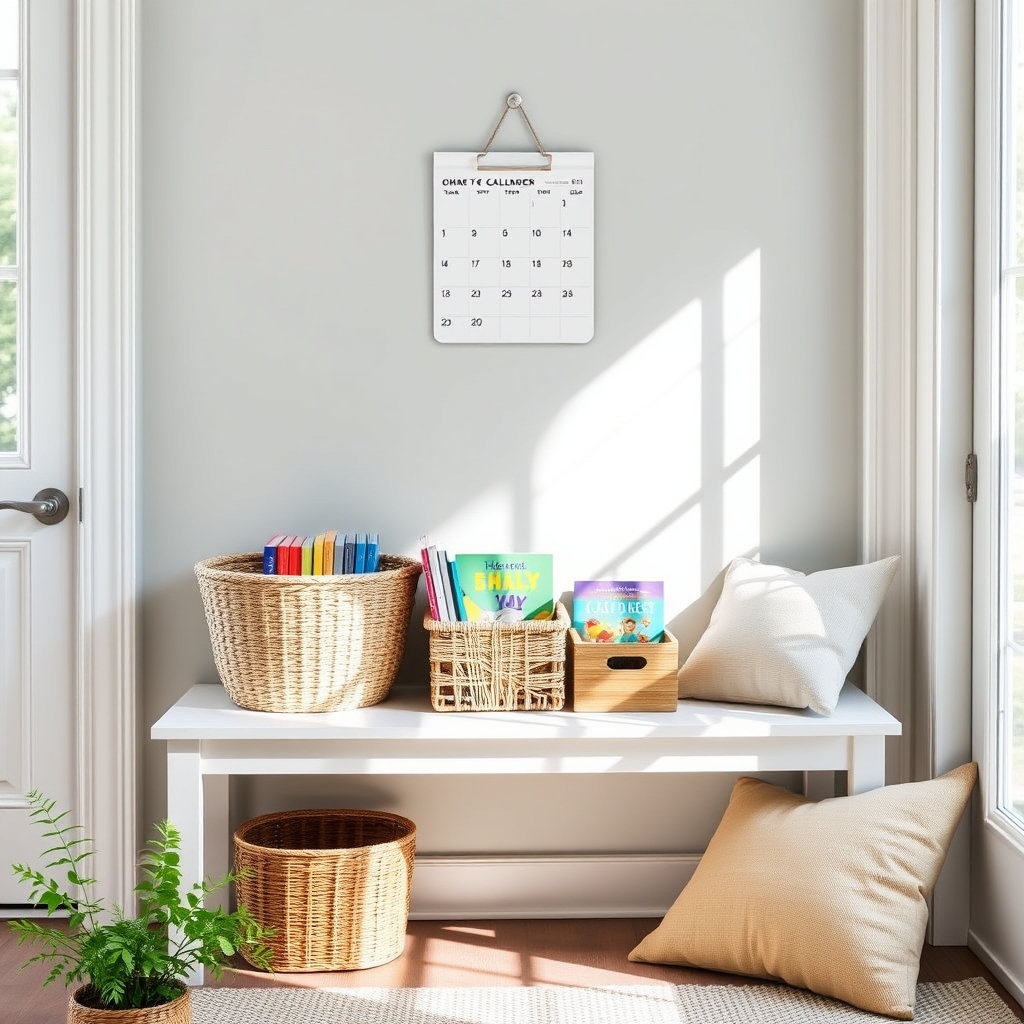
A well-organized library book basket station serves as a central hub for managing borrowed books, preventing late returns, and keeping track of reading materials for the whole family. This system helps eliminate the stress of searching for library books throughout the house when due dates approach and creates a designated space for all library materials.
Creating a basket station not only streamlines the library book return process but also teaches children responsibility and organizational skills. When everyone knows exactly where to place and find library books, it becomes easier to maintain a smooth borrowing routine and avoid unnecessary late fees.
Required Items:
- Multiple baskets or containers
- Labels or label maker
- Due date tracking cards
- Permanent marker
- Shelf or designated surface area
- Container for library cards
- Return date calendar
- Hanging file folder (optional)
- Storage bins for sorting by family member (optional)
Select a high-traffic area in your home, such as near the entryway or in the family room, to establish your basket station. Designate specific baskets for different purposes: one for newly borrowed books, another for books ready to return, and additional baskets for each family member if desired.
Label each basket clearly and attach a tracking system to monitor due dates. Position the station at a height accessible to all family members, ensuring easy access for both adults and children.
Create a simple check-in/check-out system where family members place new library books in the “incoming” basket immediately upon arrival home. When someone finishes a book, they move it to the “return” basket and note the due date on the tracking card. Establish a routine of checking the “return” basket weekly to prevent overdue items.
Additional Tips: Consider implementing a color-coding system for different family members or library branches. Keep a small notepad near the station for requesting new books or noting titles to search for during the next library visit.
Schedule a weekly “basket check” to review due dates and organize returns, making it part of your regular household routine. This proactive approach helps maintain the system’s effectiveness and prevents books from getting lost in the shuffle of daily life.
Designate a Special Library Book Shelf
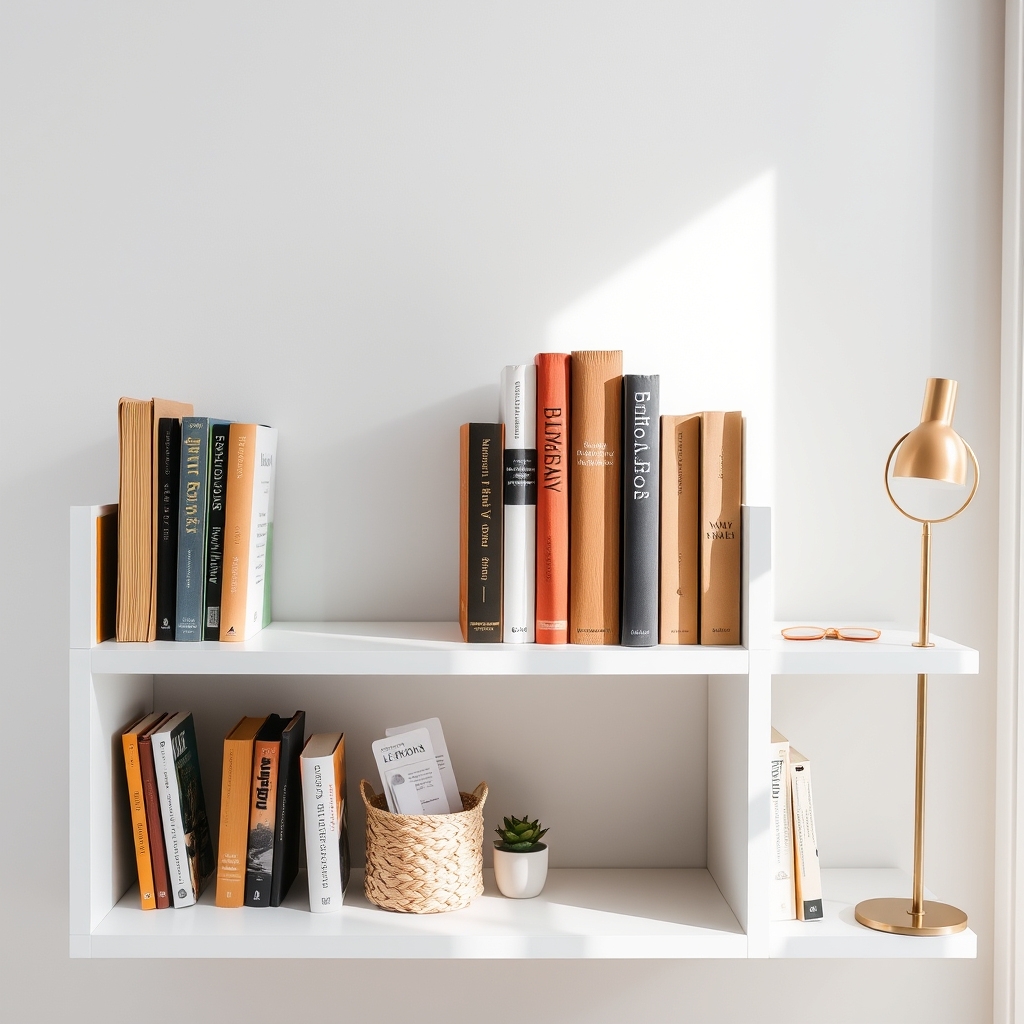
Creating a dedicated library book shelf is essential for maintaining order in your home and ensuring borrowed books don’t get mixed up with your personal collection. When library books have their own designated space, you’re less likely to misplace them, forget due dates, or accidentally pack them away with your permanent collection.
A well-organized library book shelf system saves time and money by preventing overdue fees and lost book charges. It also helps create a smooth borrowing routine, making it easier to track what you’ve borrowed and when items need to be returned, ultimately enhancing your overall library experience.
Required Items:
- Empty bookshelf or dedicated shelf space
- Bookends
- Due date calendar or reminder system
- Labels or markers
- Small basket or container for library cards
- Book dividers
- Cleaning cloth
Choose an easily accessible location for your library book shelf, ideally near your home’s entry point or in your primary reading area. Clear the chosen shelf completely and clean it thoroughly. Divide the shelf into sections: currently reading, to be read, and ready to return.
Use bookends or dividers to keep these sections distinct and prevent books from falling over. Place recently borrowed books on the left side and migrate them rightward as their due dates approach, creating a natural timeline for returns.
Set up a small basket or container on the shelf to store library cards, receipts, and any related materials. Consider adding a small whiteboard or calendar nearby to note due dates. If multiple family members use the library, designate different sections of the shelf for each person, using labels or color-coding for easy identification.
To maximize effectiveness, implement a weekly check of due dates and shelf organization. Consider taking photos of your library books’ spines when you first bring them home, creating a digital backup of what needs to be returned.
Place the shelf away from direct sunlight and moisture to protect the books, and establish a household rule that library books must always return to this designated space when not being read.
Use Door-Hanging Organizers for Books
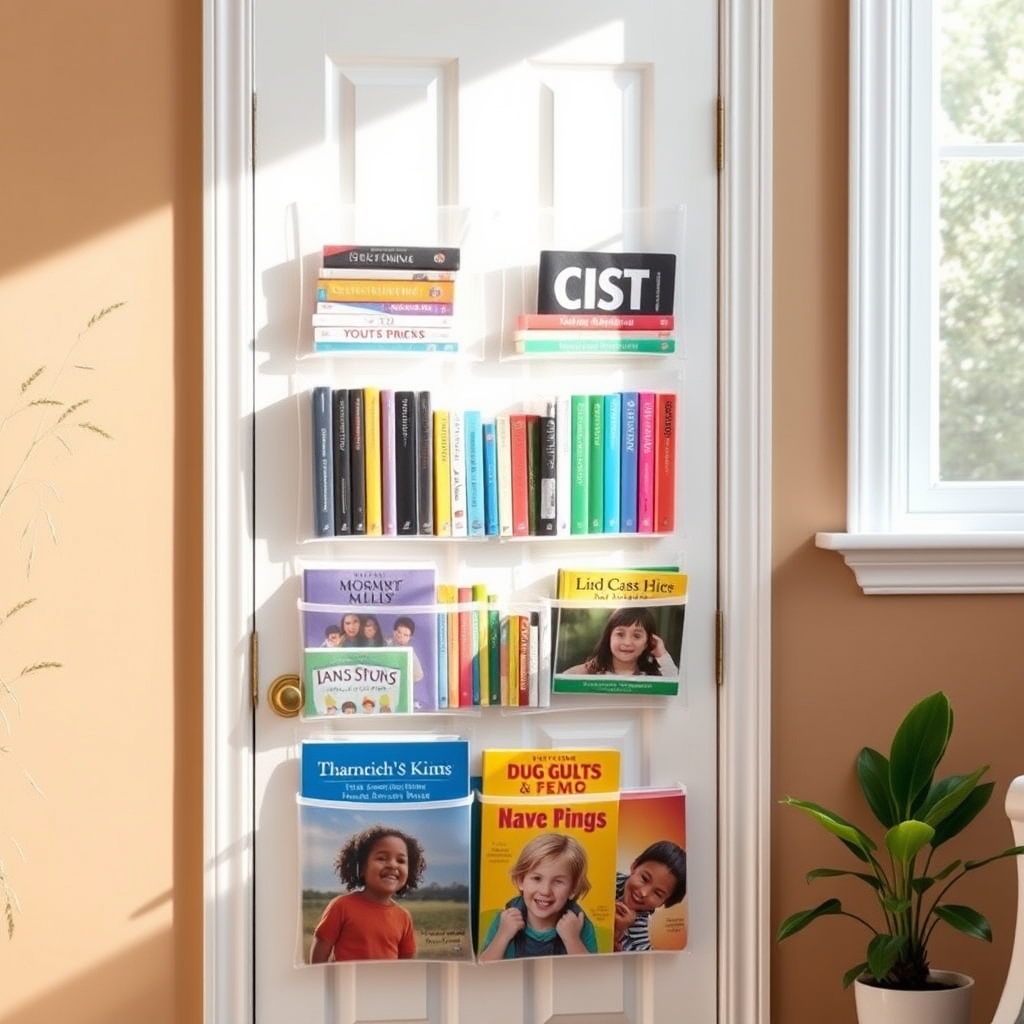
Door space is often an overlooked storage opportunity in homes and apartments where floor and shelf space may be limited.
Door-hanging organizers, typically used for shoes or accessories, can be repurposed into an efficient and accessible library storage solution that maximizes vertical space while keeping books organized and easily accessible.
This storage method is particularly beneficial for paperbacks, children’s books, and frequently accessed reference materials. The clear pockets common in many door organizers allow for visible book spines, making it simple to locate specific titles while protecting books from dust and damage.
Required Items:
- Over-the-door hanging organizer (heavy-duty)
- Door hooks or mounting hardware
- Measuring tape
- Level
- Command strips (optional)
- Scissors
- Label maker or markers (optional)
Install the door organizer by placing the hooks over the top of the door, ensuring it hangs straight and secure. Before loading books, assess each pocket’s weight capacity and organize books by size, genre, or reading frequency.
Start with heavier books in the bottom pockets to maintain stability. Arrange paperbacks vertically in each pocket, with spines facing outward for easy identification. For added security, use command strips at the bottom corners to prevent swinging when the door moves.
Sort books strategically by placing children’s books at lower levels for easy access by young readers. Keep frequently used reference materials at eye level, and store lighter items in upper pockets.
Consider using clear pockets for maximum visibility, and avoid overstuffing compartments to prevent stretching or tearing.
Additional Tips: Rotate books periodically to prevent permanent creasing in paperback spines. Label each pocket section for better organization, and regularly check the door hooks for security.
During seasonal cleaning, remove books to dust both the organizer and books, maintaining the condition of your collection while ensuring the longevity of your storage solution.
Set Up a Library Book Return Box
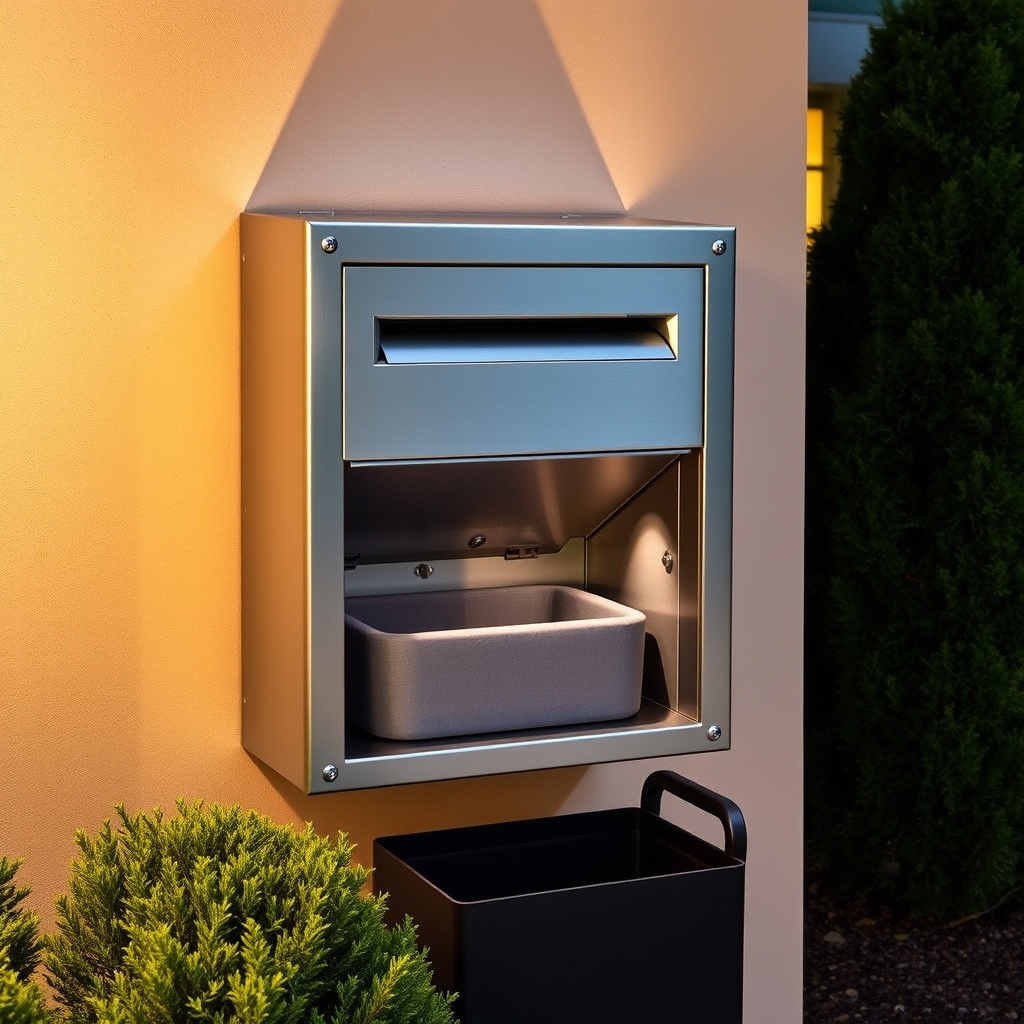
A well-organized library book return box system is essential for maintaining an efficient flow of borrowed materials and protecting books from damage during the return process.
This dedicated space ensures books are safely collected and processed while preventing them from being misplaced or exposed to environmental elements.
Setting up a proper book return box not only streamlines the return process but also provides convenience for library users who need to return items outside of regular operating hours.
A thoughtfully designed return system can significantly reduce book damage and make the check-in process more efficient for library staff.
Required Items:
- Weather-resistant metal or heavy-duty plastic box
- Rubber mat or padding material
- Security lock
- Weatherproof seals
- Installation hardware
- “Book Return” signage
- Anti-theft baffle system
- Book cart (for collection)
- Installation tools
- Security cameras (optional)
Choose a location near the library entrance that’s well-lit and easily accessible, yet protected from direct weather exposure.
Install the return box at a comfortable height, typically between 36-42 inches from the ground, ensuring the slot is wide enough for larger books but narrow enough to prevent unauthorized access.
Secure the box firmly to the ground or wall using appropriate mounting hardware, and install the anti-theft baffle system to prevent book retrieval through the slot.
Line the bottom of the box with shock-absorbing padding to protect books from damage when dropped.
Install weatherproof seals around all edges and openings to prevent moisture infiltration.
Ensure the staff access door has a robust locking mechanism and that the book retrieval process can be done safely and ergonomically.
Apply clear signage indicating acceptable materials and return guidelines.
For optimal results, inspect the return box regularly for damage or wear, maintain the padding and seals, and consider installing security cameras to monitor usage.
Empty the box frequently during peak return periods to prevent overflow, and establish a regular cleaning schedule to remove dust and debris that could damage books.
Consider implementing a wheeled cart system beneath the return slot to make collection easier and reduce strain on staff members.
Transform a Window Seat Into Library Storage

A window seat represents prime real estate in any home, offering both comfort and the potential for substantial storage space. Converting this area into a library storage solution creates a cozy reading nook while maximizing functionality in rooms where space might be limited.
By transforming a window seat into library storage, you create an organized system that keeps books easily accessible while maintaining the aesthetic appeal of your living space. This dual-purpose solution prevents books from cluttering other areas of your home while establishing a dedicated space for reading and relaxation.
Required Items:
- Measuring tape
- Storage bins or baskets
- Bookends
- Label maker
- Drawer pulls or handles
- Wood or built-in storage compartments
- Cushions and pillows
- Hinges (if creating lift-top storage)
- Basic tools (screwdriver, drill, level)
- Shelf dividers
Start by measuring the window seat area to determine storage capacity and plan compartment divisions. Install built-in shelving units or storage drawers beneath the seating area, ensuring they’re properly secured and level.
Create sections within the storage space using shelf dividers, considering both horizontal and vertical storage options to accommodate different book sizes. If opting for a lift-top design, install heavy-duty hinges to support the weight of the seat and provide easy access to books stored underneath.
For optimal organization, sort books by genre, size, or frequency of use. Install drawer pulls or handles for easy access to stored materials, and use storage bins or baskets for smaller items or paperbacks. Apply labels to clearly identify different sections and maintain organization over time.
To maximize this storage solution, rotate books seasonally, keeping currently-read materials easily accessible. Use bookends to prevent books from falling when compartments aren’t full, and consider adding LED strip lighting for improved visibility.
Maintain proper ventilation to prevent moisture damage, and leave some space for future additions to your library collection.
Repurpose Kitchen Cart as Mobile Book Storage
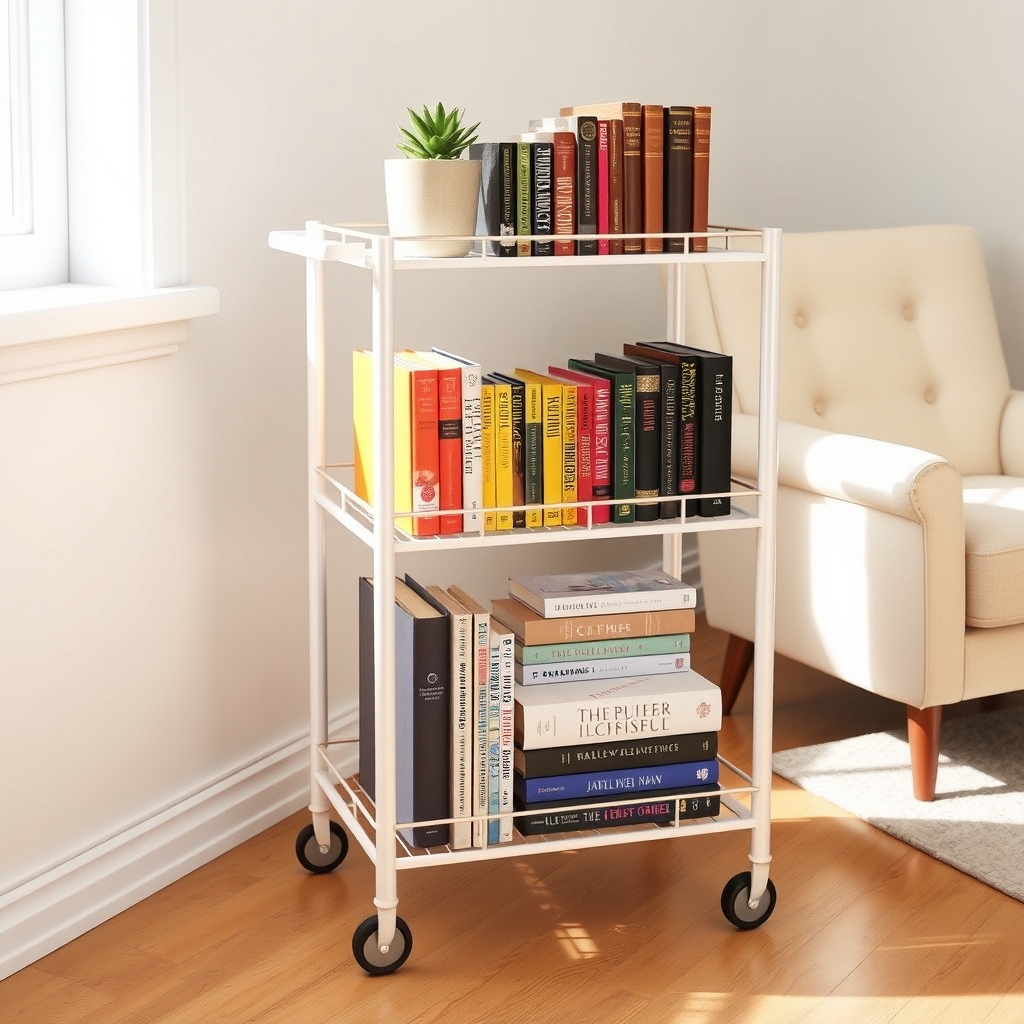
A mobile book storage solution can transform how you interact with your home library, making books more accessible while maximizing limited space. Kitchen carts are particularly well-suited for this purpose, offering sturdy construction, multiple shelves, and wheels for easy movement between rooms or reading areas.
Converting a kitchen cart into a book storage unit combines functionality with flexibility, allowing you to create designated reading zones or temporary book displays. This solution is especially valuable for small spaces, apartments, or homes where built-in shelving isn’t feasible.
Required Items:
- Kitchen utility cart (with wheels)
- Book ends
- Non-slip shelf liner
- Small storage boxes or baskets
- Label maker or labels
- Cleaning supplies
- Basic tools for assembly (if needed)
- Rubber wheel stoppers
Select a kitchen cart with appropriate dimensions for your book collection and begin by thoroughly cleaning all surfaces. Install non-slip liner on each shelf to prevent books from sliding when moving the cart.
Arrange books by category, size, or genre, using the top shelf for frequently accessed titles and lower shelves for heavier books to maintain stability. If the cart includes drawers or cabinets, utilize these spaces for bookmarks, reading lights, or other accessories. Position book ends strategically to keep books upright and organized, especially on partially filled shelves.
Consider these additional tips to optimize your mobile book storage: Rotate the book selection periodically to keep the cart’s weight manageable and prevent wheel strain. Install wheel stoppers when the cart is stationary to prevent unwanted movement.
Maintain a balance between aesthetic appeal and practical organization by mixing vertical and horizontal book stacking. For protection in humid environments, consider adding silica gel packets between books, and avoid placing the cart in direct sunlight to prevent book damage.
Install a Library Book Command Center
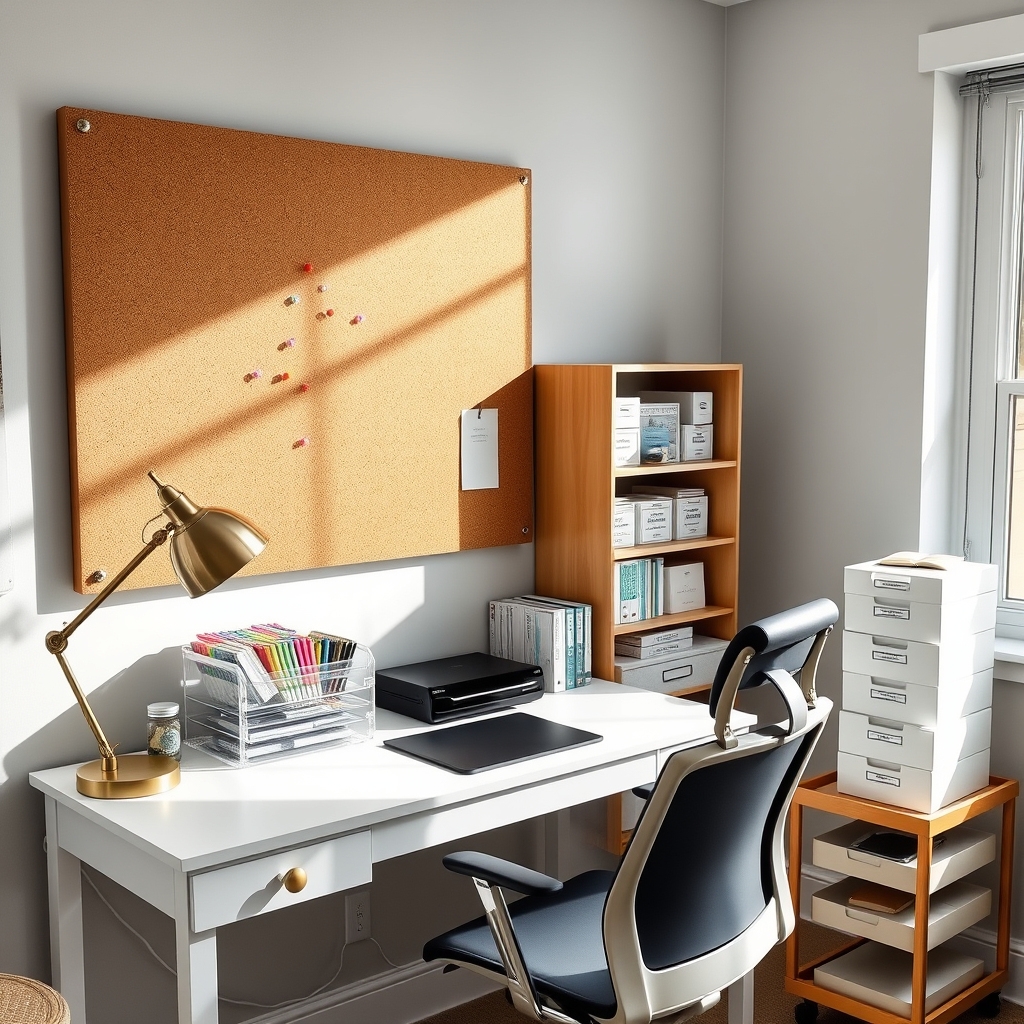
A well-organized library command center serves as the backbone of any home library system, enabling efficient book tracking, lending, and maintenance. This dedicated space acts as a central hub where you can manage your collection, track borrowed books, and maintain essential library supplies all in one accessible location.
Creating a command center transforms casual book storage into a systematic library operation. It eliminates the frustration of lost books, forgotten loans, and disorganized supplies while providing a professional approach to managing your collection, whether it consists of dozens or hundreds of volumes.
Required Items:
- Desk or table
- Wall-mounted bulletin board
- Filing system or organizer
- Book tracking software or lending cards
- Label maker
- Basic office supplies (pens, notepads, sticky notes)
- Storage containers
- Book repair kit
- Scanner (optional)
- Small shelf unit
Select a quiet corner or dedicated space for your command center, preferably near your main book collection. Install the bulletin board at eye level and position your desk beneath it. Set up your filing system on one side of the desk for loan cards or documentation.
Arrange storage containers for supplies on the opposite side, ensuring easy access. Create designated zones for book processing, repairs, and returns. Install your scanning station if applicable, and ensure proper lighting for detailed work. Set up your tracking system, whether digital or analog, and establish a clear workflow pattern from left to right across your workspace.
Final organizational tips: Implement a color-coding system for different categories of tasks or books. Maintain a daily checklist visible on your bulletin board for routine library maintenance.
Consider creating a mobile cart for frequently used supplies if your library spans multiple rooms. Regular weekly maintenance of your command center will keep operations running smoothly and prevent system breakdown over time.

